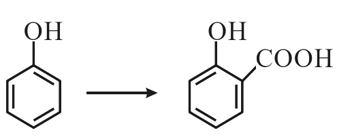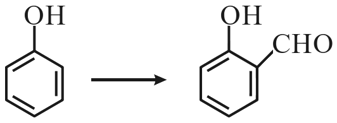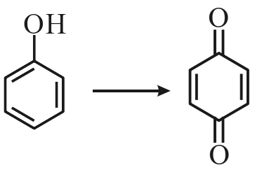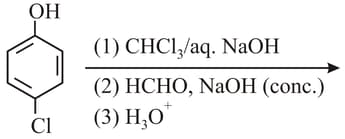HARD
Earn 100
Match List-I with List-II.
List I (Reaction)
List II (Reagent(s))
(A)

(I)
(B)

(II)
(C)

(III)
(i)
(ii) (iii)
(D)

(IV)
(i) (ii)
(iii)
Choose the correct answer from the options given below:



(ii) (iii)

(iii)
(a)(A)-(IV), (B)-(I), (C)-(III), (D)-(II)
(b)(A)-(II), (B)-(III), (C)-(I), (D)-(IV)
(c)(A)-(II), (B)-(I), (C)-(III), (D)-(IV)
(d)(A)-(IV), (B)-(III), (C)-(I), (D)-(II)
86.69% studentsanswered this correctly
Important Questions on Alcohols, Phenols and Ethers
MEDIUM

HARD

EASY
Match the following values.
| Acid | |||
| (a) | Phenol | (i) | |
| (b) | -Nitrophenol | (ii) | |
| (c) | Ethanol | (iii) | |
| (d) | Picric acid | (iv) |
EASY
EASY
MEDIUM
MEDIUM
HARD
MEDIUM
HARD
MEDIUM
HARD
The major product of the following reaction is:

EASY
Salicylic acid, Benzoic acid, Ascorbic acid, Phenol
EASY
MEDIUM
MEDIUM
Phenol on reaction with dilute nitric acid, gives two products. Which method will be most efficient for large scale separation?
EASY
HARD
MEDIUM
MEDIUM
The major product of the following reaction is:


